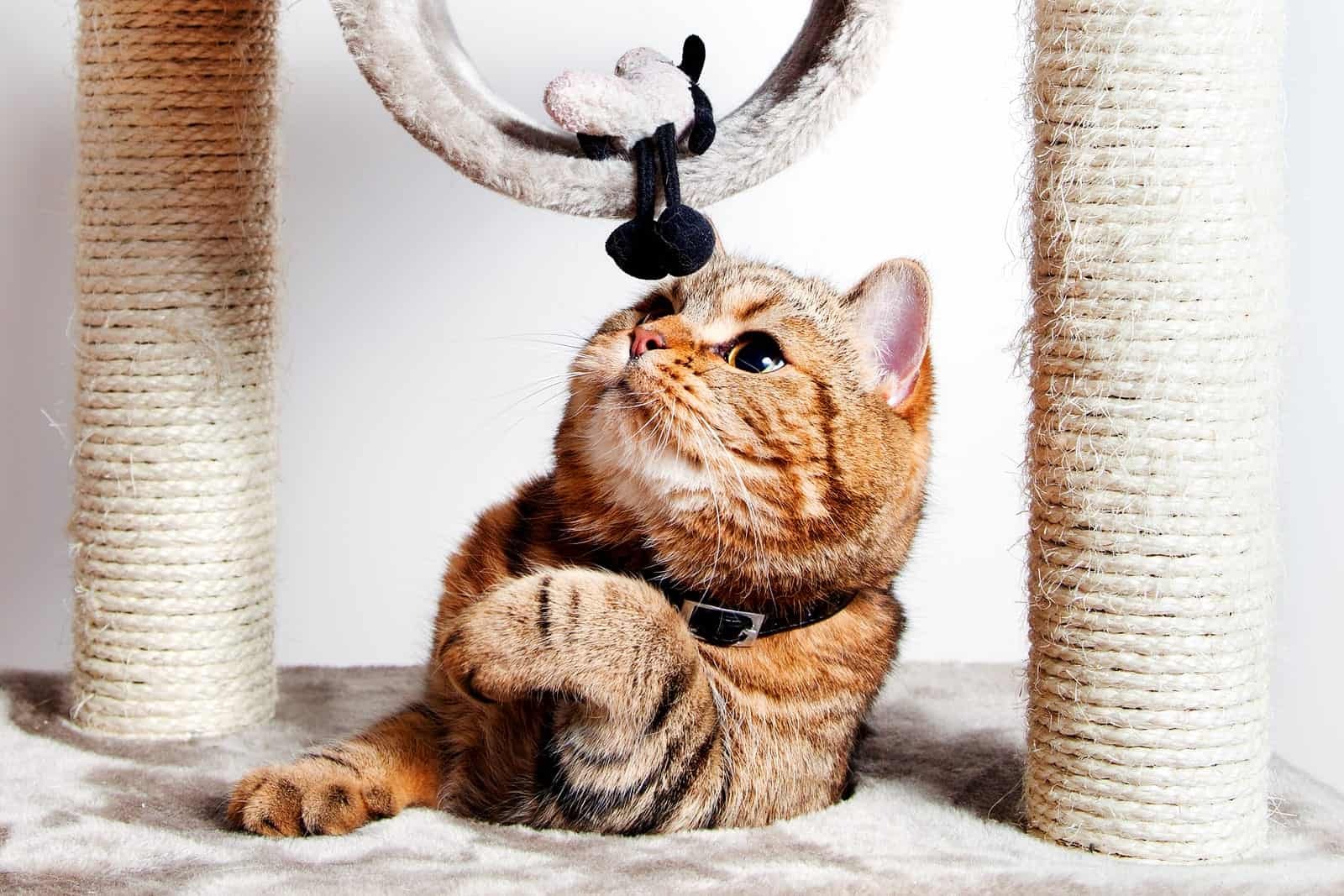
Ever wondered why housecats are such intriguing companions? These furry friends have been part of human households for thousands of years, yet they still manage to surprise us daily. From their mysterious behaviors to their unique physical traits, housecats are full of fascinating quirks. Did you know that a cat's purr can have healing properties? Or that they can rotate their ears 180 degrees? Whether you're a seasoned cat owner or just curious about these enigmatic creatures, this list of 35 facts will give you a deeper appreciation for your feline friends. Get ready to learn some surprising truths about housecats that will make you see them in a whole new light!
Key Takeaways:
- Housecats have a rich history, from being revered in ancient Egypt to sailing with Vikings. They have unique physical traits, like retractable claws and flexible spines, and exhibit quirky behaviors such as kneading and chattering.
- Cats communicate through meowing, tail language, and slow blinking. Taking care of their health, hydration, and dental needs is crucial for a long, happy life. They love to play and have a unique social structure, forming strong bonds with humans and other cats.
The Fascinating World of Housecats
Housecats are more than just adorable companions. They have a rich history, unique behaviors, and surprising traits. Let's dive into some intriguing facts about these beloved pets.
Historical Tidbits
Housecats have been around for thousands of years, and their history is full of fascinating details.
- Ancient Egypt: Cats were revered in ancient Egypt. They were associated with the goddess Bastet, who represented home, fertility, and protection.
- Domestication: The domestication of cats began around 9,000 years ago in the Near East. They were attracted to human settlements by the abundance of rodents.
- Viking Companions: Vikings kept cats on their ships to control rodent populations. They also believed cats brought good luck.
Unique Physical Traits
Cats have some unique physical characteristics that set them apart from other animals.
- Whiskers: A cat's whiskers are highly sensitive and can detect even the slightest changes in their environment.
- Retractable Claws: Unlike dogs, cats have retractable claws, which help them stay sharp for hunting.
- Flexible Spine: Their spine is incredibly flexible, allowing them to twist and turn their bodies with ease.
- Night Vision: Cats have excellent night vision, which helps them hunt in low-light conditions.
Behavioral Quirks
Cats exhibit a range of behaviors that can be both amusing and puzzling.
- Kneading: Cats knead with their paws as a comforting behavior, often reminiscent of kittenhood when they kneaded their mother's belly for milk.
- Purring: While purring is often a sign of contentment, cats also purr when they are in pain or stressed as a self-soothing mechanism.
- Head-Butting: Cats head-butt to mark their territory with scent glands located on their heads.
- Chattering: When watching birds or other prey, cats may chatter their teeth. This behavior is thought to be a mix of excitement and frustration.
Communication Skills
Cats have a variety of ways to communicate with humans and other animals.
- Meowing: Adult cats typically meow only to communicate with humans, not other cats.
- Tail Language: The position and movement of a cat's tail can convey a wide range of emotions, from happiness to agitation.
- Slow Blinking: A slow blink from a cat is a sign of trust and affection.
Health and Lifespan
Taking care of a cat's health is crucial for a long, happy life.
- Lifespan: Indoor cats can live up to 15 years or more, while outdoor cats have a shorter lifespan due to various risks.
- Hydration: Cats often don't drink enough water. Wet food can help keep them hydrated.
- Dental Health: Dental disease is common in cats. Regular check-ups and dental care are essential.
- Obesity: Obesity is a significant health issue for housecats. A balanced diet and regular exercise are crucial.
Fun and Play
Cats love to play, and their playful nature is a joy to watch.
- Hunting Instincts: Even well-fed housecats have a strong hunting instinct. Toys that mimic prey can keep them entertained.
- Laser Pointers: Many cats love chasing laser pointers, but it's important to let them catch a physical toy occasionally to avoid frustration.
- Cardboard Boxes: Cats are famously fond of cardboard boxes. They provide a sense of security and a place to hide.
Social Structure
Cats have a unique social structure that can be quite complex.
- Solitary Hunters: While cats are often seen as solitary hunters, they can form strong bonds with other cats and humans.
- Territorial: Cats are territorial animals. They mark their territory with scent glands located on their face, paws, and tail.
- Hierarchy: In multi-cat households, a hierarchy often develops, with one cat becoming the dominant figure.
Grooming Habits
Cats are known for their meticulous grooming habits.
- Self-Grooming: Cats spend a significant portion of their day grooming themselves to keep their fur clean and free of parasites.
- Allogrooming: Cats also groom each other, a behavior known as allogrooming, which helps strengthen social bonds.
- Hairballs: Regular grooming can lead to hairballs. Brushing your cat can help reduce the occurrence of hairballs.
Sensory Abilities
Cats have some remarkable sensory abilities that help them navigate their world.
- Hearing: Cats have an exceptional sense of hearing and can detect frequencies that are inaudible to humans.
- Smell: Their sense of smell is 14 times stronger than that of humans, helping them detect food and other scents.
- Taste: Cats have fewer taste buds than humans and cannot taste sweetness.
Miscellaneous Facts
Here are some additional fun facts about housecats.
- Sleeping: Cats sleep for about 12-16 hours a day, conserving energy for hunting.
- Polydactyl Cats: Some cats are born with extra toes, a condition known as polydactylism.
- Famous Cats: Grumpy Cat, Maru, and Lil Bub are some of the internet's most famous feline celebrities.
- Catnip: About 70-80% of cats are affected by catnip, which can cause them to become hyperactive or relaxed.
- Space Cats: In 1963, a cat named Félicette became the first and only cat to travel to space.
The Final Meow
Housecats are fascinating creatures with a rich history and unique behaviors. From their ancient Egyptian roots to their quirky habits today, these furry companions never cease to amaze. They can purr their way into our hearts, communicate with a variety of sounds, and even have a knack for finding the sunniest spots in the house. Understanding these facts helps us appreciate our feline friends even more. Whether it's their incredible agility, mysterious night vision, or their ability to land on their feet, housecats are truly remarkable. Next time your cat curls up on your lap or chases a laser pointer, remember there's a lot more to them than meets the eye. So, keep those treats handy, enjoy their playful antics, and cherish the bond you share with your whiskered buddy.
Frequently Asked Questions
Was this page helpful?
Our commitment to delivering trustworthy and engaging content is at the heart of what we do. Each fact on our site is contributed by real users like you, bringing a wealth of diverse insights and information. To ensure the highest standards of accuracy and reliability, our dedicated editors meticulously review each submission. This process guarantees that the facts we share are not only fascinating but also credible. Trust in our commitment to quality and authenticity as you explore and learn with us.


